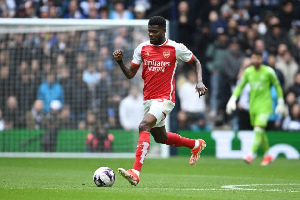- Home - Entertainment
- Lifestyle News
- Entertainment Videos | TV
- Year In Review
- Music News
- Entertainers
- Entertainment Archive
- Entertainment Photos
- Jokes
- Entertainment Headlines
- Ameyaw Debrah
- Brown GH
- Celebrities Buzz
- GH Base
- Ghana Celebrities
- Gh Gossip
- GH Page
- GH Splash
- Hot Gossip GH
- YEN

Entertainment of Thursday, 3 September 2020
Source: yfmghana.com
The evolution of High-life music - A narration by K.K Kabobo
Legendary high-life musician K.K Kabobo has shared the riveting story on how the high-life genre evolved from a past filled with tradition and survived with the help of musicians such as Rambles International, C.K Mann among others.
How it started
Speaking to Chelsy Sey host of ‘Ryse N Shyne’ on Y 97.9 FM, K.K Kabobo said: ‘’High-life music started along the coastal areas, Accra, Cape Coast and Takoradi. I think when Diego de Azambuja, and the others came to Ghana they didn’t just bring schnapps and the Bible, they also came along with their guitars and that is how brass band music started. The local musicians used the one-string guitars left behind by the Europeans and locally manufactured drums to make brass band music. The songs composed at the time were not for commercial purposes.’’
The Trios
He continued by saying that it was around that time that three-man bands like Fanti-Trio, Gomoa-Trio and Ahanta-Trio emerged.
‘’The small bands like Ahanta-Trio, Fanti-Trio, go to palm wine bars and sing to entertain. Sometimes the compositions were spontaneous-they used situations happening around them to compose songs. Then came the formation of guitar bands, those in Accra, Takoradi, Cape Coast formed big bands and they started using guitars and drums.
The crave for international recognition
Guitar bands worked hard to get international recognition. Dr. K Gyasi came out with ‘Tete High-life’ and he was the first to introduce keyboard (organ) to Ghana. And they added that to the high-life ensemble and rhythm. Those from Accra and Cape Coast started using wind instruments, that gave their compositions a foreign feel and the British loved it’’ he said.
The British touch and the name high-life
‘’The British loved the brass band sound with the horns, trumpets etc, so they ‘fortified’ it. The British at the time lived in bungalows and not just anyone could go to them, so when the British adopted that music they ensured that it was for only the British and a few elite Ghanaians. The name high-life came to be associated with the music made by E.T Mensah and the Tempos, Uhuru band etc. exclusively for the high class’’ he narrated.
The Ghanaian pop culture
‘’The guitar bands were playing in villages, the big bands were rather in town with their bushy hair (afro) and their flashy lifestyles playing for big people. Nana Ampadu wrote songs and gave to Ramblers international to perform, sometimes you write the song, for the big bands to reorganise or re-compose and perform. High-life developed in Ghana and moved to Nigeria’’ he said.
Global Media Alliance has dedicated the entire September to celebrating the Made in Ghana Month. As part of that, the theme for this week is to educate the general public on the evolution of the Ghanaian music forms like High-Life, Hip-Life etc.
Unlike Hip-life, no one group has made High-life their own, and therefore it has remained a wonderfully rare example of free spirit and expression of the human experience.











